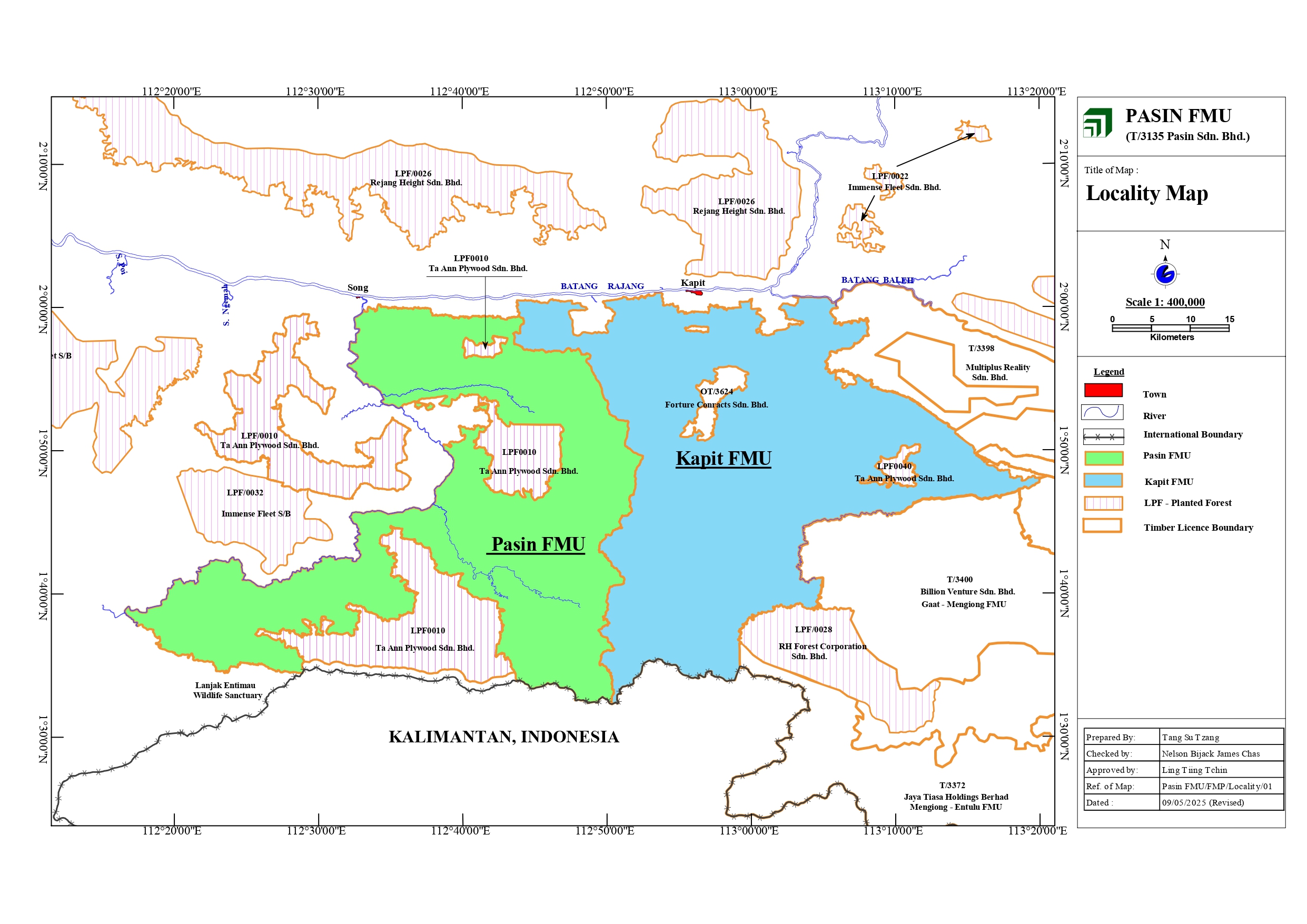- Pasin FMU has a total area of 127,851 ha. 22.5% of Pasin FMU is located under the gazette Protected Forest, 28.8% is under the proposed Protected Forest and the remaining 48.7% is currently under Stateland Forest status.
- The Batang Rejang forms the northern boundary while the Kapit FMU borders it to the east. The western boundary is bordered along Sg. Katibas till it reaches the Lanjak Entimau Wildlife Santuary (LEWS), which straddles the international boundary of Kalimantan, Indonesia.
- Pasin FMU is accessible by express boat or four wheel drive vehicles from Sibu town which take around 3-4 hours to reach base camp.

- The license tenure of the FMU has been revised and extended to thirty (30) years as an incentive for achieving and maintaining forest management certification as stipulated in Policy Direction for Forest Management Certification in Sarawak.
- The FMU is predominantly covered by mixed dipterocarp forest, while secondary forest formed by shifting agriculture and ‘pulau’ are found along the Bangkit, Bloh, Katibas and Tekalit rivers.
- Based on assessment carried out by Ecosol Consultancy Sdn Bhd in June 2017 and followed by the FMU’s annual faunal monitoring activities conducted until the year 2023 through survey/camera trappings, a total of 96 species were recorded consisting of 35 birds, 35 mammals, 10 reptiles, 7 amphibians and 9 fish.
- The Pasin FMU contains undulating topography and is mountainous to the south where it meets the international boundary with Indonesia, with altitudes ranging from 75-880m above sea level (asl).
- Approximately 50% of the FMU is located in the Heart of Borneo (HoB), a government and NGO supported programme led by the World Wide Fund for Nature (WWF), to conserve the biodiversity through a network of protected areas, sustainable management of forest and other sustainable land uses.
- Based on SIA report, 2019 Pasin FMU and its adjacent area are inhabited by 112 settlements which 54 settlements located inside and 58 is located adjacent 3 km from FMU boundary. However, after continuously communication and consultation with local community leaders and CRC members, as of 2023, Pasin FMU has 119 settlements (54 settlements are inside and 65 settlements located adjacent to FMU).
updated on 14 Jul 2025